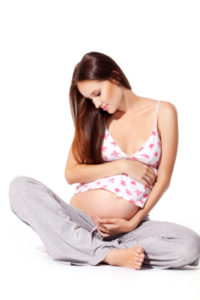Electroacupuncture Enhances Number of Mature Oocytes and Fertility Rates for In Vitro Fertilization
Kristen Sparrow • July 28, 2020

 Studies showing improved blood flow to the uterus with acupuncture are well known. This study shows improvement in number of mature ooctyes with electroacupuncture versus sham acupuncture.
Studies showing improved blood flow to the uterus with acupuncture are well known. This study shows improvement in number of mature ooctyes with electroacupuncture versus sham acupuncture.Electroacupuncture Enhances Number of Mature Oocytes and Fertility Rates for In Vitro Fertilization
Abstract
Objective: The increasing prevalence of infertility every year is in line with the increasing need for in vitro fertilization (IVF) programs. Failure of oocyte maturation is an obstacle that often causes low success in IVF. According to several studies, controlled ovarian stimulation (COS) has been reported to increase the risk of granulosa-cell apoptosis associated with inhibition of oocyte maturation. This study was conducted to determine the effect of electroacupuncture (EA) on oocyte maturation; rate of fertilization; granulosa-cell apoptosis; and levels of growth-differentiation factor 9 (GDF9) and bone-morphogenetic protein 15 (BMP15) an IVF program.
Materials and Methods: A randomized controlled trial was conducted with 24 subjects who were in the IVF program. Subjects were randomly allocated into verum-EA (n = 12) and sham-EA groups (n = 12). Microscopic assessment of oocyte maturation and rate of fertilization was performed by embryologists, and examinations of granulosa-cell apoptosis index (Bax/Bcl-2 ratio), GDF9, and BMP15 were performed, using real-time quantitative polymerase chain reaction and messenger-RNA techniques.
Results: There were significant differences in oocyte maturation (P = 0.02) and fertilization rates (P = 0.03) between the verum-EA and sham-EA groups. There were differences in granulosa-cell apoptosis index between the verum-EA and sham-EA groups (P < 0.001). There were significant differences in Bax-protein expression (P = 0.04) and Bcl-2 (P = 0.03) granulosa cells between the verum-EA and sham-EA groups. There was no significant difference in GDF9 levels (P = 0.34) and BMP15 (p = 0.47) between the verum-EA and sham-EA groups.
Conclusions: EA can enhance oocyte maturation and fertilization rate, and reduce the granulosa-cell apoptosis index in an IVF program.
Introduction
Controlled ovarian stimulation (COS) was introduced in the early 1980s as part of a therapeutic method in in vitro fertilization (IVF) to improve multifollicle development, thereby increasing the number of oocytes at the time of retrieval, which can then provide 1 or more embryos to be transferred. This would eventually increase the pregnancy rate.1 One factor that has an important influence on good embryo development is oocyte quality. The development and maturation of oocytes is potentially a key success factor for IVF.
The two main hormone therapies used in COS are analogue gonadotropin-releasing hormone (GnRH) and gonadotropin. In its development, the use of analogue GnRH on COS, which suppresses the pituitary gland and prevents the occurrence of a surge of luteinizing hormone (LH), was considered to reduce oocyte maturation.2,3
Studies have suggested that analogous GnRH acts on specific ovarian receptors that block gonadotropin actions, including follicular development and differentiation,4 and increases apoptosis in granulosa-cell DNA fragmentation in mice with hypofisectomy.5 Increased incidence of granulosa-cell apoptosis is associated with low numbers of oocytes retrieved, empty follicles, and low fertilization rates. Granulosa-cell apoptosis is also a sensitive indicator in estimating oocyte quality in patients undergoing IVF.3
The process of apoptosis in granulosa cells is activated through an intrinsic pathway and is influenced by several proteins and several other biomolecules. B-cell protein family lymphoma gene-2 (Bcl-2) is a protein that is known to have a large role in apoptosis. Members of the Bcl-2 protein family are divided into 2 groups based on their roles in apoptosis, namely the proapoptotic group Bcl-2–associated X (Bax) and the antiapoptosis group (Bcl-2). Apoptosis is influenced dominantly by the apoptotic index or the ratio of Bax/Bcl-2 found in granulosa cells.6,7
Administration of gonadotropin stimulates the formation of multifollicular development. However, this multifollicle development will occur in various amounts and functional activities, so that it contains oocytes at various maturation stages.8 Storage of maternal messenger RNA (mRNA) accumulated during folliculogenesis and exogenous gonadotropin administration accelerates nucleation maturation, which results in insufficient storage of mRNA, resulting in low oocyte and embryo-development quality.9
As a minimal risk therapy—and one that does not cause serious side-effects—in recent years, acupuncture has also been widely used as a complementary therapy in IVF programs. It is known that acupuncture can increase insulin-like growth factor–1 (IGF-1)10 and vascular endothelial growth factor (VEGF)11 in patients undergoing IVF. These factors are among the survival factors that play a role in reducing follicular apoptosis.12,13 In addition, acupuncture is also known to increase blood flow to the reproductive organs.14,15 Yet, research on acupuncture effects on granulosa and oocyte cells is limited. Therefore, this study was conducted to examine the effect of EA therapy on oocyte maturation index, rate of fertilization, granulosa-cell apoptosis index, and levels of growth-differentiation factor 9 (GDF9) and bone-morphogenetic protein 15 (BMP15) in an IVF program.

